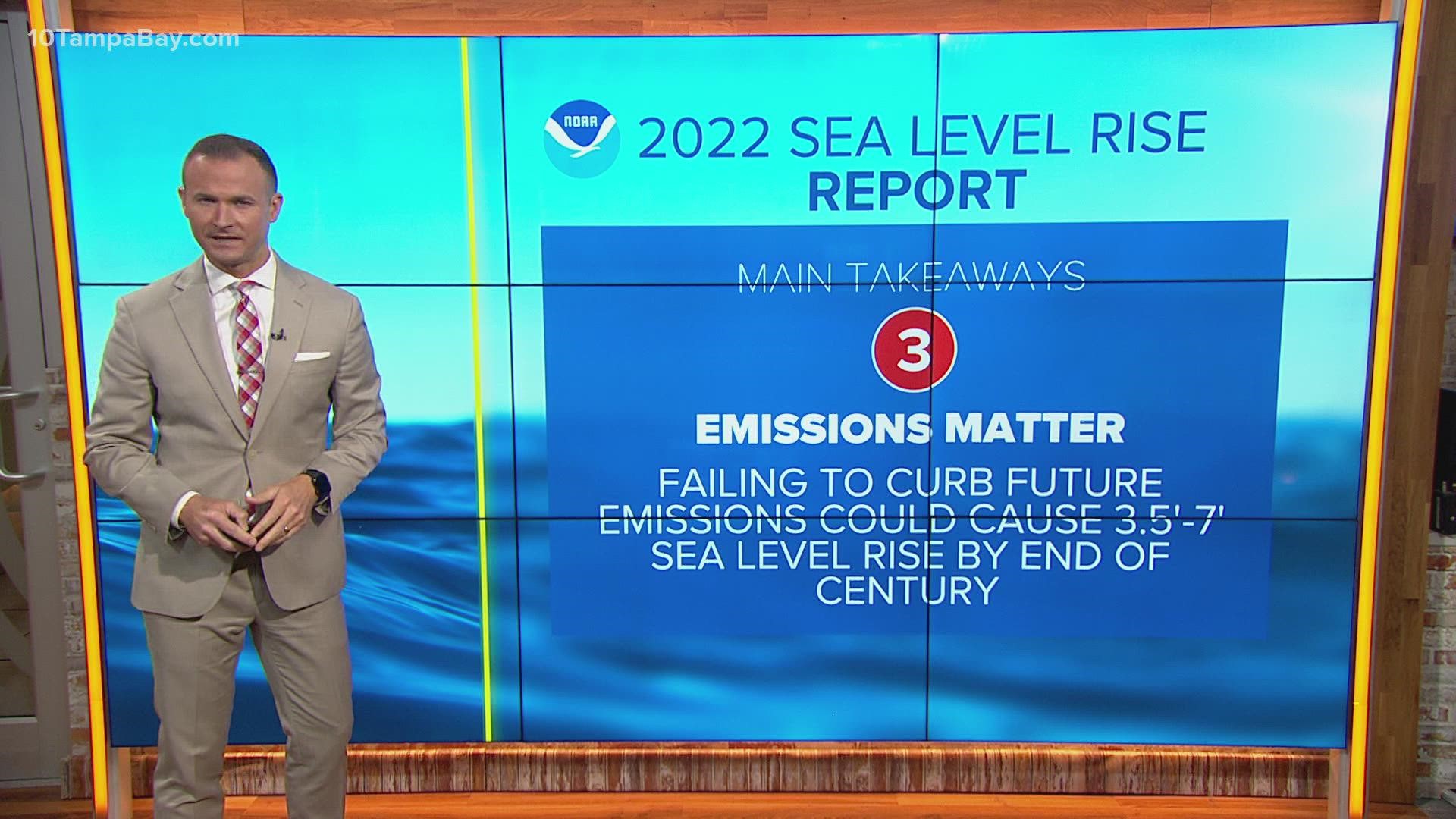TAMPA, Fla. — Florida could be in major trouble over the next 30 years due to sea-level rise, according to several prominent federal agencies.
On Tuesday, the National Oceanic and Atmospheric Administration and six other federal agencies issued a 111-page report that projects by 2050, seas lapping against the U.S. shore will be at least 10-12 inches higher.
The upcoming 30-year span of projected sea-level rise would match how much levels rose in the entire 20th century.
However, sea levels could rise as much as a foot and a half for the Gulf Coast and 14 inches along the east coast. Essentially, all of Florida's coast will see above the projected average.
“Make no mistake: Sea level rise is upon us," director of NOAA’s National Ocean Service Nicole LeBoeuf said.
The projected increase is especially alarming given that in the 20th century, seas along the Atlantic coast rose at the fastest clip in 2,000 years.
What does that mean for the Tampa Bay area?
NOAA says current and future emissions matter and are connected to how much sea-level rise will impact the Earth.
10 Tampa Bay meteorologist Grant Gilmore says if emissions aren't curbed, we could see up to 7 feet of sea-level rise along the U.S. coast by 2100, including right here in the Tampa Bay area.
If that happens, Tampa's Convention Center and Davis Islands will be underwater.
Similarly, all of the St. Petersburg waterfront would be underwater. Additionally, the coast stretching from Clearwater Beach to Fort Desoto would also be covered.
The report said between now and 2060, expect almost 25 inches of sea-level rise in Galveston, Texas, and just under 2 feet in St. Petersburg. However, only 9 inches is possible in Seattle and 14 inches in Los Angeles.
So what exactly is expected to happen by 2050?
1. Sea level to rise up to at least 1 foot

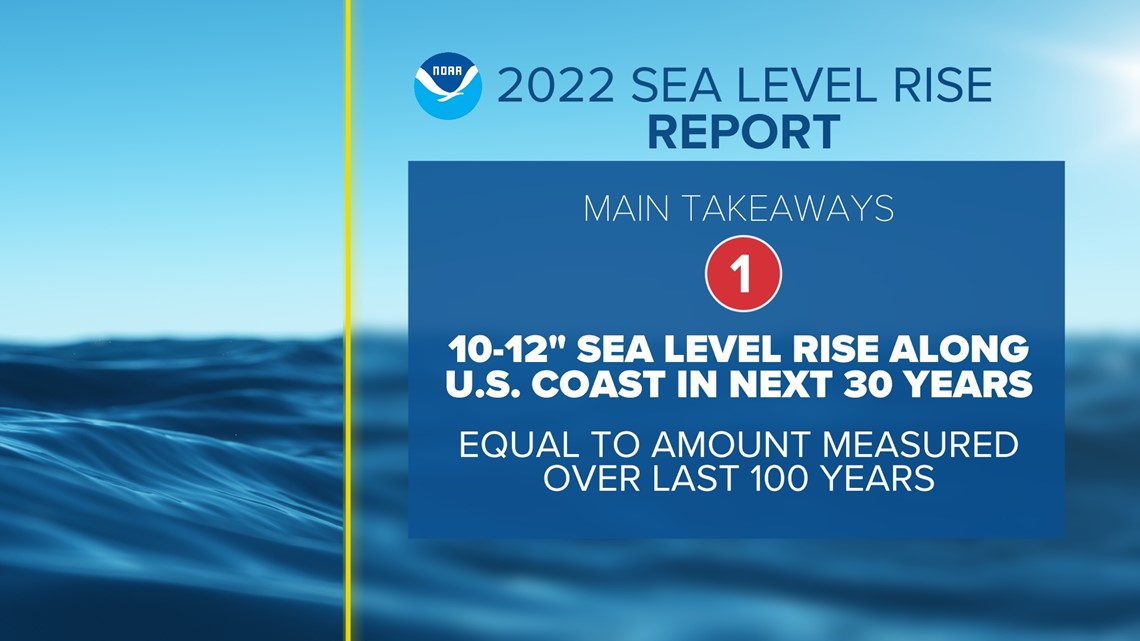
Again, the gulf and east coasts of the U.S. are expected to have a higher sea-level rise than the average number projected by NOAA.
2. More damaging flooding projected

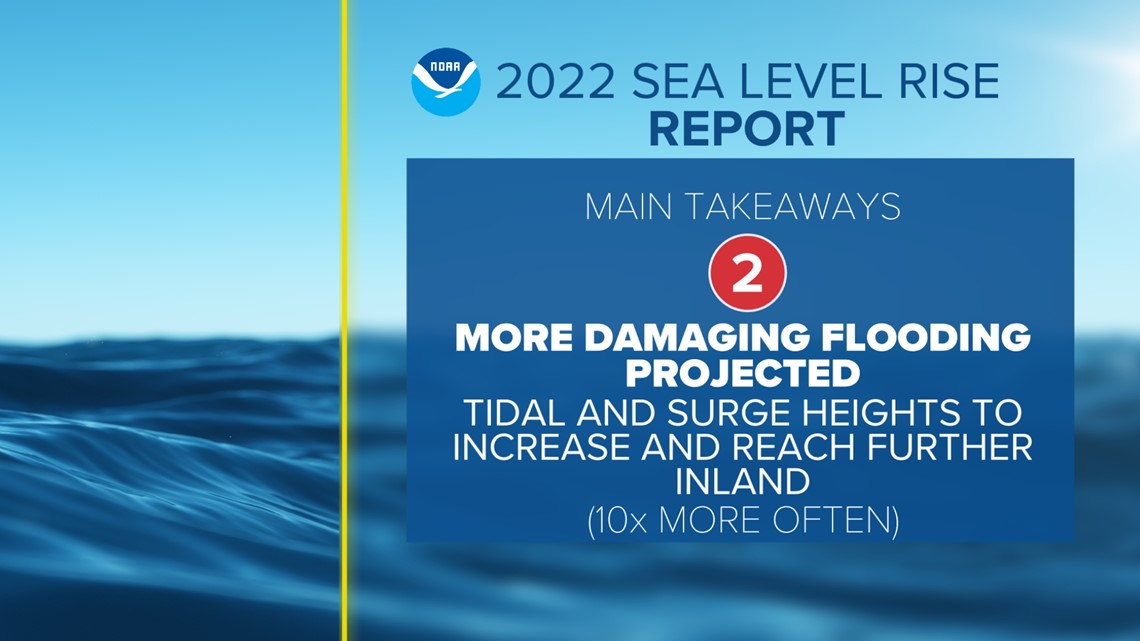
"By 2050, 'moderate' (typically damaging flooding is expected to occur, on average, more than 10 times as often as it does today, and can be intensified by local factors," NOAA says.
As an area that sees significant storm surge during hurricane season, those conditions would become even worse as a result of rising seas.
3. Emissions matter

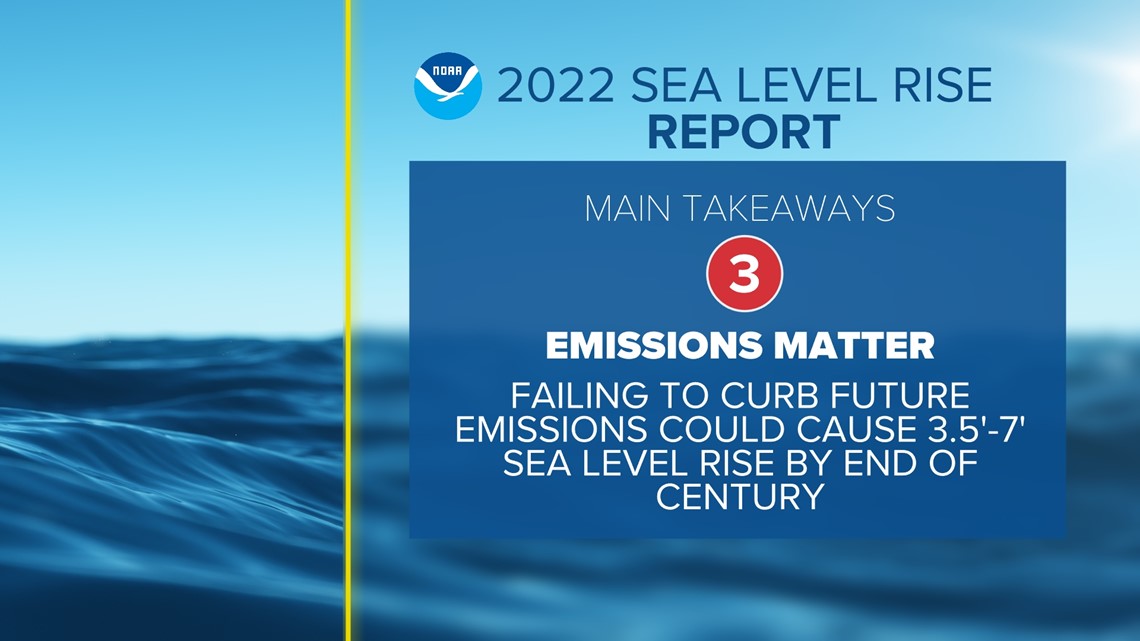
"Current and future emissions will determine the amount of additional rise in the future: the greater the emissions, the greater the warming, and the greater the likelihood of higher sea levels," NOAA says.
4. Continual tracking

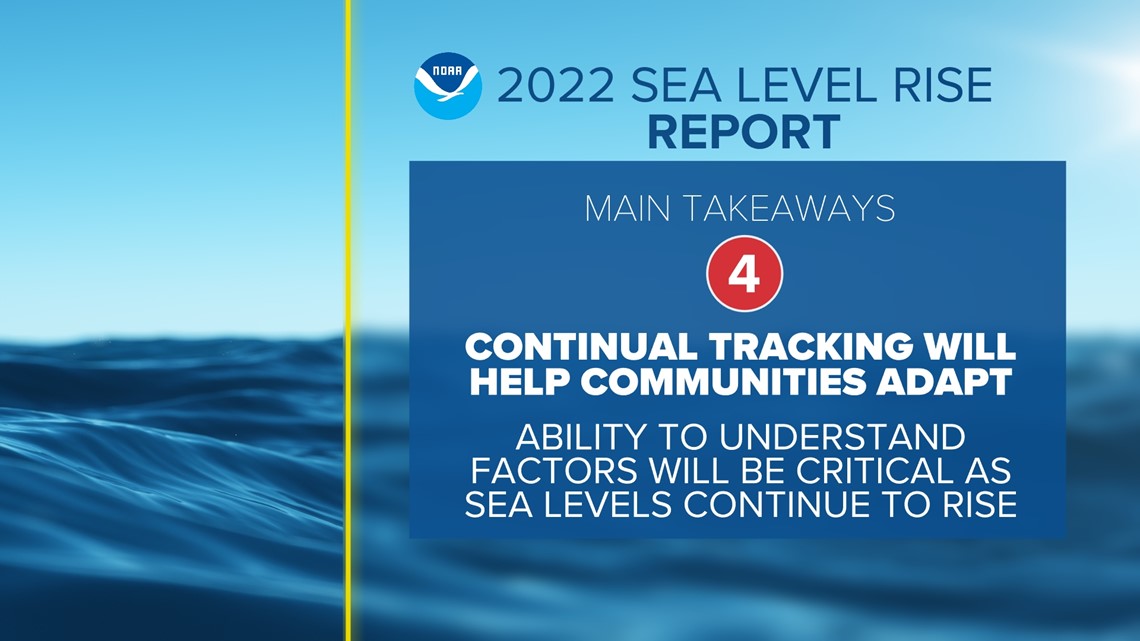
"U.S. federal agencies performing continuous monitoring and assessments of key sea level rise source contributions affecting U.S. coastlines — such as ocean heat content, ice mass loss from Greenland and Antarctica, vertical land motion, and changes in the Gulf Stream — can provide early indications of change in the trajectory of sea-level rise, which can inform shifts in adaptation planning," the report said.

